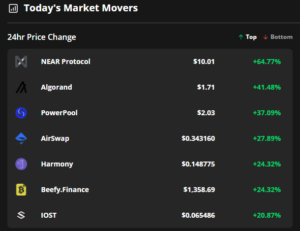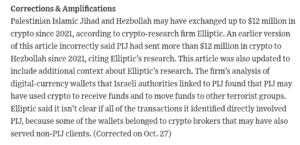
Forex trading, commonly referred to as foreign currency trading, entails buying and selling other currencies to increase one’s financial gain.
Forex trading involves trading fiat currency pairings and is open 24 hours a day during weekdays — i.e., closed on weekends — with trading sessions in major financial hubs, such as London, New York, Tokyo and Sydney. The first currency in the pair is known as the “base currency,” and the second currency is referred to as the “quote currency” or the “counter currency.” For instance, the United States dollar (USD) is the quotation currency, and the euro (EUR) is the base currency in the EUR/USD pair.
Traders make predictions about the strength or weakness of one currency relative to another and base their choices on analysis (fundamental, technical and sentiment). To forecast how currencies may behave, fundamental analysis looks at economic and political aspects, such as interest rates, inflation, gross domestic product (GDP) growth and geopolitical events. Using this analysis, fundamental analysts explore the larger economic environment and how it affects currency rates.
Technical analysis, on the other hand, uses charts, indicators and historical price data to spot patterns and trends in currency pair prices. Technical analysts contend that past price trends might offer insightful information about the direction of future prices.
Additionally, sentiment analysis is essential for determining the general attitude of the market. To assess the general sentiment and attitude shifts among traders and investors, this involves tracking market sentiment through news, social media and other means. Sentiment analysis is used by traders to analyze market psychology and make informed trading decisions.
Moreover, usually, standard lots, mini lots or micro lots are used in forex trades. To control a larger position size with a relatively small amount of cash, traders frequently employ leverage in forex trading. Leverage can boost profits, but it also raises the possibility of significant losses. Therefore, risk management is also necessary to guard against losses. This involves employing the appropriate position sizing and using stop-loss orders to reduce potential losses.
- SEO Powered Content & PR Distribution. Get Amplified Today.
- PlatoData.Network Vertical Generative Ai. Empower Yourself. Access Here.
- PlatoAiStream. Web3 Intelligence. Knowledge Amplified. Access Here.
- PlatoESG. Automotive / EVs, Carbon, CleanTech, Energy, Environment, Solar, Waste Management. Access Here.
- PlatoHealth. Biotech and Clinical Trials Intelligence. Access Here.
- ChartPrime. Elevate your Trading Game with ChartPrime. Access Here.
- BlockOffsets. Modernizing Environmental Offset Ownership. Access Here.
- Source: https://cointelegraph.com/explained/forex-vs-cryptocurrency-trading-explained
- :is
- 24
- a
- About
- against
- also
- among
- amount
- analysis
- Analysts
- analyze
- and
- Another
- appropriate
- ARE
- AS
- aspects
- assess
- At
- attitude
- base
- boost
- but
- Buying
- by
- CAN
- Cash
- Charts
- choices
- closed
- Cointelegraph
- commonly
- control
- Counter
- cryptocurrency
- cryptocurrency trading
- currencies
- Currency
- currency trading
- data
- day
- decisions
- determining
- direction
- Dollar
- Domestic
- during
- e
- Economic
- Environment
- essential
- EUR
- EUR/USD
- Euro
- explained
- explore
- financial
- First
- For
- Forecast
- foreign
- foreign currency
- forex
- Forex Trading
- frequently
- fundamental
- future
- Gain
- GDP
- General
- gross
- Guard
- hand
- historical
- HOURS
- How
- HTTPS
- Hubs
- i
- in
- Increase
- Indicators
- information
- informed
- insightful
- instance
- interest
- Interest Rates
- Investors
- involves
- IT
- jpg
- known
- larger
- Leverage
- London
- LOOKS
- losses
- major
- make
- management
- Market
- market sentiment
- May..
- means
- Media
- micro
- might
- necessary
- New
- New York
- news
- of
- offer
- on
- ONE
- open
- or
- Other
- pair
- pairings
- past
- patterns
- plato
- Plato Data Intelligence
- PlatoData
- political
- position
- possibility
- potential
- Predictions
- price
- Prices
- Product
- profits
- Psychology
- quote
- raises
- Rates
- reduce
- referred
- relative
- relatively
- Risk
- risk management
- s
- Second
- Selling
- sentiment
- sessions
- Shifts
- significant
- Size
- small
- Social
- social media
- Spot
- standard
- States
- strength
- such
- sydney
- Technical
- that
- The
- their
- therefore
- this
- Through
- to
- tokyo
- Tracking
- Traders
- trades
- Trading
- Trading sessions
- Trends
- United
- United States
- USD
- used
- uses
- using
- usually
- vs
- weakness
- with
- york
- zephyrnet












